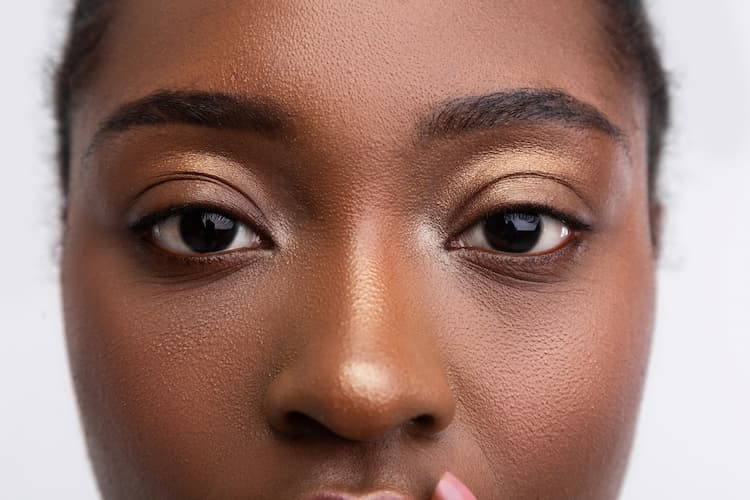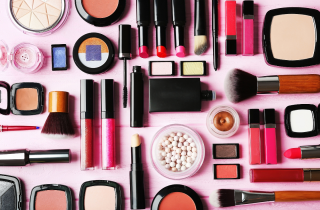African American Women and Breast Cancer
At a Glance
African American women face both disproportionate exposure to breast carcinogens and the highest risk of serious health impacts from the disease. We’ve put together a fact sheet to help you understand the current stats, product types to avoid, and chemicals of concern.

Facts
Globally
Breast cancer affects more women than any other type of cancer and is the leading cause of cancer-related deaths among women.
In the United States
Over the past 20 years, despite the universal drop in mortality rates, we have seen a rise in the incidence of breast cancer in African American women. In particular, disparities between mortality rates for White and Black women have grown significantly.
- A U.S. woman’s lifetime risk of breast cancer is 1 in 8.[1]
- African American women have a 40% breast cancer mortality rate – the highest of any U.S. racial or ethnic group.[2]
- The mortality rate for Black women diagnosed with breast cancer is 42% higher than the comparable rate for White women.[3]
- Among women younger than 40, breast cancer incidence is higher among African American women than White women.[2]
- Triple negative breast cancer (hormone receptor negative/HER2 negative), a subtype of the disease that is both more aggressive and associated with a higher mortality, is more common among African American women than other racial or ethnic groups.[2]
- Breast cancer is the leading cause of cancer death in the U.S. for African American women.[4]
- Black women who used hair dye at least every 5–8 weeks had a 60% higher breast cancer risk.[5]
Products to Watch Out For:
These products are often marketed to Black women yet contain some of the most worrisome ingredients in cosmetics:
- Skin lighteners
- Hair relaxers
- Brazilian blowout treatments
- Acrylic nails
While it may seem overwhelming to overhaul your entire beauty bag, it is possible to make small changes one product at a time.

Skin lighteners
Skin lighteners, which may also be marketed as skin lightening or spot and acne removal creams and lotions, often contain hydroquinone (a known endocrine disruptor), or worse, mercury. Skin lighteners sold in ethnic markets that are imported to the U.S. are of particular concern because they have been found to contain mercury, which is associated with a host of health problems including nervous system, reproductive, immune and respiratory toxicity. Mercury is easily spread on different surfaces and may adversely impact not only the individual who uses the product, but other family members as well, particularly babies.
Nail polish, products and treatments
Acrylic nail treatments are of concern for both those administering and receiving the nail treatment. Women of color make up a large percentage of those who work as nail technicians. Bureau of Labor statistics show that nail workers are 6.1% Black or African American, 56.7% Asian, and 7.8% Hispanic or Latina. Occupationally, individuals working in this industry are exposed to carcinogens and endocrine disruptors in nail polishes, primers, and glues such as formaldehyde, dibutyl phthalate, hydroquinone, toluene, and ethyl/methyl methacrylate on a daily basis. Studies routinely show that women working in nail salons report health concerns such as rashes,headaches, dizziness, and breathing difficulties, as well as miscarriages, birth defects and cancers.
Hair relaxers
Hair treatments, including hair relaxers or Brazilian blowouts, expose women to some ugly chemicals. Hair relaxers (both lye and non-lye) are associated with hazards such as chemical scalp burn, scarring, dry skin, baldness, eye irritation, and dry broken hair. Hair relaxers are made with a base of sodium hydroxide, guanidine hydroxide, or ammonium thioglyocolate, which are high pH chemicals, and can cause irreversible damage to both hair and scalp. Post-relaxing treatment require neutralizing shampoos and conditioners to be used, and often contain chemicals like formaldehyde-releasing preservatives, endocrine disruptors, or carcinogens.

Fragrance
Fragrance is often a driving force behind buying choices. Cosmetic and personal care giant Procter & Gamble (P&G) data shows that 22.5% of Black women choose a product based on fragrance. A commonly used ingredient in fragrance is diethyl phthalate (DEP), an endocrine disruptor. Phthalates are linked to breast cancer, developmental issues, decreased fertility, obesity and asthma.
Information gathered by the National Health and Nutrition Examination Survey (NHANES) shows that Black women and Hispanic women have much higher rates of DEP in their urine (almost double!) than White and Asian women. Chemicals of Concern: Benzene, coal tar, coumarin, DMDM hydantoin, formaldehyde, fragrance, hydroquinone, monoethyl phthalate (MEP), monoethanolamine (mea), mercury, mercury salts, parabens, phthalates, p-phenylenediamine, toluene.
8 Safe Cosmetics Tips for African American and Black Women
- Find safer products in our Non-Toxic Black Beauty Database.
- Shop these Campaign for Safe Cosmetics-verified Non-Toxic Black-owned beauty brands that sell products with ingredients you can trust.
- Learn the top toxic ingredients to watch out for in Black beauty products.
- Get our tip cards for safer shopping! Save them on your phone or print them out.
- Avoid products with “fragrance” or “parfum” on the label that doesn’t list specific ingredients. “Fragrance” can mean any number of potentially harmful chemicals.
- Use tools like Clearya and ThinkDirty to alert you to toxics and help you find safer products while you shop online.
- Visit our Non-Toxic Black Beauty Project to learn more about systemic environmental injustice.
- Take action by helping pass laws for safe cosmetics!
Given that African American communities face both high exposure and high risk, it’s crucial that the cosmetics industry reform to ensure that cosmetic products, particularly those targeting these vulnerable communities, are made with safe ingredients.
Additional Resources
Breast Cancer Statistics, 2022: https://acsjournals.onlinelibrary.wiley.com/doi/10.3322/caac.21754,
ACS PPT on Breast Cancer Statistics: https://www.cancer.org/research/cancer-facts-statistics/breast-cancer-facts-figures.html
[1] Howlader N, Noone AM, Krapcho M, et al. (eds). SEER Cancer Statistics Review, 1975–2017, National Cancer Institute. Bethesda, MD, https://seer.cancer.gov/csr/1975_2017/, based on November 2019 SEER data submission, posted to the SEER web site, April 2020.
[2] Giaquinto, A.N., Sung, H., Miller, K.D., Kramer, J.L., Newman, L.A., Minihan, A., Jemal, A. and Siegel, R.L. (2022), Breast Cancer Statistics, 2022. CA A Cancer J Clin. https://doi.org/10.3322/caac.21754
[3] DeSantis CE, Siegel RL, Sauer AG, et al. Cancer statistics for African Americans, 2016: Progress and opportunities in reducing racial disparities: Cancer Statistics for African Americans, 2016. CA Cancer J Clin. 2016;66:290-308.
[4] Bray F, Ferlay J, Soerjomataram I, Siegel RL, Torre LA, Jemal A. Global cancer statistics 2018: GLOBOCAN estimates of incidence and mortality worldwide for 36 cancers in 185 countries. CA Cancer J Clin. 2018;68:394-424.
[5] Carolyn E. Eberle,Dale P. Sandler,Kyla W. Taylor,Alexandra J. White. Hair dye and chemical straightener use and breast cancer risk in a large US population of black and white women, 2019. Int. J. Cancer: 147, 383-391 (2020).
Types: Article, Fact Sheet




